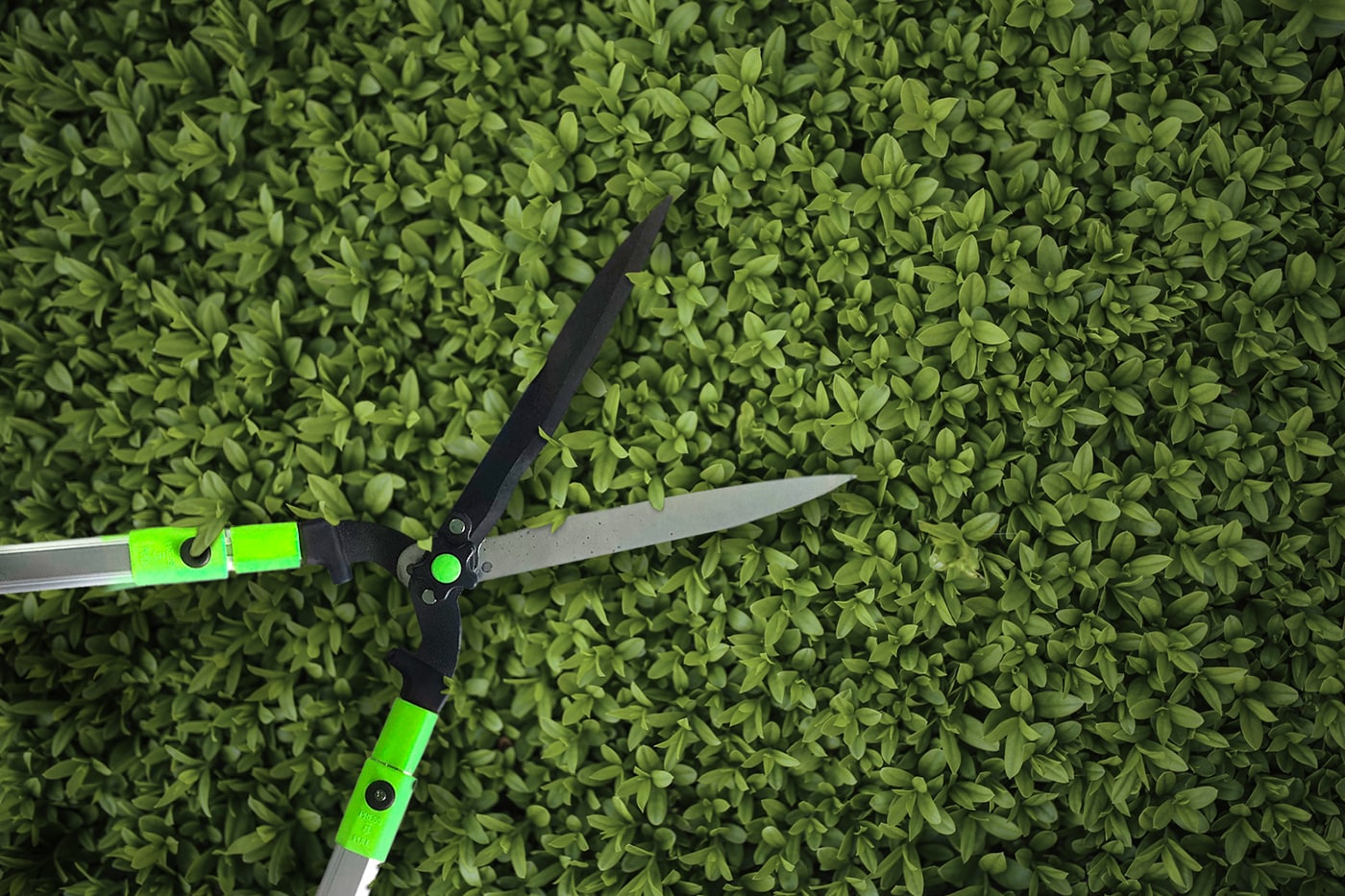Pruning is necessary to maintain the shape of shrubs and hedges as well as to promote new growths. And when it comes to pruning, you must avoid pruning too aggressively and too closely; otherwise, you might end up hurting the plants.
It’s equally important to use the right tools. If you want to use shrubbery as a natural barrier, invest in a quality pair of hedge shears. Hedge shears like the ECOgardener garden hedge shears are designed for heavy-duty use. The narrow blades let you cut woody stems and branches in tight spaces, while the handles have the correct length for control and accuracy.
You can also use loppers to cut deadwood and green wood in high places, but for the most part, you’ll only need a pair of hedge shears and gloves to get this yard work done. Now let’s talk about ways to prepare yourself for pruning shrubs for hedges:
Contents []
Seasonal vs. Daily Pruning

Does your garden require seasonal or daily pruning? Pruning and trimming plants should be done at specific times of the year.
Daily Pruning: Removing dead, damaged, and diseased parts of the plant can be done any time of the year. Deadwood and diseased stems tend to spread pests, so it’s fine to prune daily if the hedges need it.
Seasonal Pruning: Assertive pruning should be done from March to April. Flowering shrubs, trees, and hedges are best pruned in late winter or early spring, just before they produce new growths. Never cut more than ¼ of the overall foliage. No major pruning should be done during the fall and winter seasons because plants tend to grow slowly during the cold months and won’t recover from aggressive pruning as quickly.
Tips to Trim Shrubs with Hedge Shears

Pruning is often done to encourage new, fuller growths, eliminate unsightly dead, dying sections, as well as to maintain the shape or control the branching of bushes and shrubs. Here are pruning tips to remember when preparing to trim shrubs:
When’s the best time to prune?
Regular pruning gives your hedges a defined shape, so your outdoor space looks neat and organized. Bushes and shrubs have to be pruned during the spring and summer seasons because these are the periods where plants grow the fastest.
Avoid pruning the top growths
The one thing to remember is to avoid cutting the top growths of the plants because these rarely grow back. Don’t prune too closely because this can hurt the plants and in some cases, kill a section of the hedges.
Never use dull blades
Never use garden shears with dull blades. Dull blades tend to crush the branches instead of making a clean cut. Using garden shears with dull blades will damage the plants. Before the growing season rolls in, have your garden shears professionally sharpened. Keep the steel blades well oiled to prevent rust and corrosion as well as to maintain their sharpness.
Pulling yellow or browning leaves away
Yellowing or browning leaves are vulnerable to pests because pests are drawn to decay. Dying leaves can be pulled off without any resistance, so this can be done by hand. Removing dying leaves will instantly make the plant look healthier. If you’re seeing a lot of yellowing or browning leaves, it’s a sign of improper watering - over or underwatering - so be mindful of how often you hydrate your plants.
The Rule of the ⅓
The perfect pruning practice for most kinds of bushes and shrubs involves trimming only about ⅓ of the good wood. If you prune too closely, you risk damaging the plants or stunting their growth. Too little pruning, on the other hand, only leads to wasted efforts because the pruning won’t have any effects on the plants and the look of the space at all. Pruning ⅓ of the good wood stimulates new growths and improves the appearance of the plants.
Avoiding pruning shock
All plants have above-ground and below-ground parts -- something to keep in mind when pruning hedges. The above-ground part tends to lose a lot of stems, so moderate pruning is needed to stimulate growth. If the plant loses too much of its leafy growths, it goes into shock, leaving the plants looking ragged for a long, long time. In some cases, the shock is so strong that it kills the plants. There should always be a balance between trimming the leafy growths and stimulating new growths when pruning.
Prune established shrubs and plants only
Never prune plants that aren’t established yet because this will kill the plant. Newly transplanted plants should be left alone for at least an entire season to give their root systems time to mature. Larger shrubs that are transplanted and pruned too quickly will go into shock, and often, the effect lasts for years!
Pruning trees too early or too much will stunt their growth. Avoid pruning the top greenery to support the plant’s growth and establish its root system. Finally, any plant that requires supplemental watering on non-dry periods shouldn’t be subjected to significant pruning.
Pruning is essential for plant growth but this should only be reserved for established plants. This goes especially for vigorous-growing deciduous species. Along with a pair of dependable pruning shears like the ECOgarden garden pruner, you can look forward to a beautiful outdoor space with these tips!




